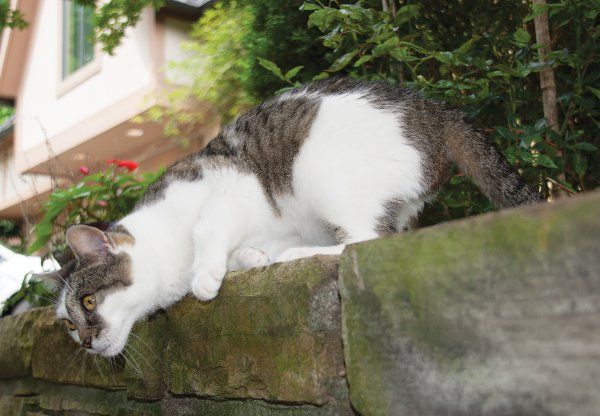People who love cats adore their sweet purr, cuddly fur and adoring natures. But sometimes, cats can show a darker side. Under certain conditions, just about any cat can become aggressive.
Most cases of aggression in cats are caused by fear. Just like all mammals, cats have a strong fight or flight instinct that kicks in when they feel threatened. If a cat doesn't feel like it can run in a scary situation, it will opt to fight instead.
Cat owners usually see aggression in their normally docile cats when the cat is being forced to do something. Some cats get nasty when getting their nails clipped. Others may start to fight when being placed in a carrier. Some even go to battle when their owners try to give them medication.
Some of the worst cases of feline aggression take place at the veterinarian's office. The strange sights, sounds and smells of the animal hospital cause anxiety in just about every cat. In so me cases, the cat's greatest fear comes out on the exam table. The cat may try to bite and scratch the veterinarian, the vet technician or even her owner.
me cases, the cat's greatest fear comes out on the exam table. The cat may try to bite and scratch the veterinarian, the vet technician or even her owner.
Fear-based aggression in cats can be hard to prevent. Taking your cat to the vet, giving him medication or putting him in a carrier are all necessary parts of life for today's domestic feline. You can do some things to help minimize your cat's fear in these particular situations. Start by giving your cat gradual exposure to whatever scares him. If he's afraid of the carrier, leave it out all the time where he can see it--not just when it's time to go to the vet. Put a comfy towel or blanket inside it, and leave the door open. You might be surprised to find him sleeping inside it one day.
Car rides can be scary for cats, so taking your cat on a short ride to the store and back can help him learn that being in the car isn't dangerous.
If your cat becomes aggressive at the vet's office, be sure you are using a veterinarian who is particularly good at handling cats. It's amazing how a calm, gentle, cat-friendly vet can reduce the amount of aggression in a frightened kitty.
Another type of feline aggression can appear when cats become physically over stimulated. Some cats are sensitive and may enjoy being petted for only a brief time. They can be purring and rubbing on you one minute, and hissing and swiping at you the next. These cats can only stand a limited amount of physical contact before if becomes too much for them, causing them to strike out. Their goal is not to hurt you, but to send the message of "back off!"
The best approach with these kinds of cats is to learn the warning signs, and stop before the cat becomes over stimulated. If the cat's tail begins to twitch and his pupils become dilated, take a break from the petting. Also, if the cat has a reputation for becoming over stimulated and aggressive, limit your petting to the top of his head. For some reason, strokes to the head are less likely to provoke over stimulation in sensitive kitties.






